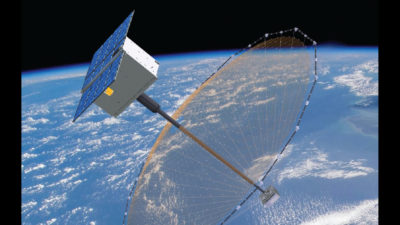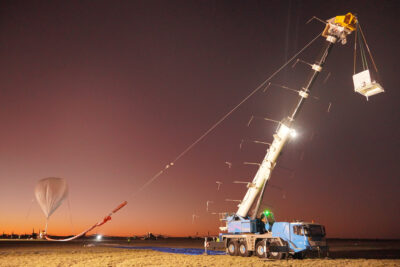Computations, experiments, flight tests and additive manufacturing improve aerospace platforms
By KEITH BERGERON AND Andrew Lofthouse|December 2021
The Applied Aerodynamics Technical Committee emphasizes the development, application and evaluation of concepts and methods using theories, wind tunnel experiments and flight tests.
In January, researchers released the results of the multiyear Virtual Aircraft Technology Integration Platform project, which ended in December 2020. Researchers at the German Aerospace Center, DLR, developed a basis for the complete digital development and description of airplanes and helicopters based on validated high-fidelity numerical methods. For example, they simulated the noise of DLR’s A320 Advanced Technology Research Aircraft high-lift system, its flight dynamics and its elastic behavior. They compared the high-fidelity simulations with real flight test data and used the validated multidisciplinary analysis and optimization methods to design a wide-body long-range aircraft. The completion of this project marked an important step along the path toward digital design and simulation-based certification.
In May and June, researchers tested new air data instruments for NASA’s X-59 Quiet SuperSonic Technology aircraft in the 8-by-6-foot (2.5-by-1.8-meter) supersonic wind tunnel at NASA’s Glenn Research Center in Ohio. The aircraft is designed to reduce the sound of a commercial supersonic aircraft’s sonic boom and to measure human perceptions of the sound in flights over land. Among the instruments is the air data probe installed at the tip of the aircraft’s nose. The probe was tested in the tunnel during simulated runs at takeoff, transonic and supersonic speeds. Lockheed Martin Skunk Works of California is scheduled to install the probe on the X-59 before flight tests begin in 2022.
In June, the U.S. Navy awarded Sikorsky a contract to build an additional nine CH-53K King Stallion heavy-lift helicopters ($878.7 million), and the program entered initial operational test and evaluation in August. The program had been delayed when the Navy found that the helicopters’ engines were re-ingesting their own exhaust. In addition to re-ingestion, the exhaust gas impinged on the skin of the aircraft. Engine bay overheating was a third problem. To solve these problems, the CH-53K Integrated Test Team collected baseline aircraft airwake and thermal data that closely matched computational fluid dynamics predictions made by the CREATE-AV Helios, Siemens Simcenter Star-CCM+ and CharLES simulation codes. The team’s digital design approach enabled the program to select several prototypes for fabrication and installation on flight test aircraft and to keep the program moving forward to meet performance, test and production milestones.
The Boundary Layer Research Group at the University of Adelaide in Australia continued exploring the use of additive manufacturing to fabricate microperforated surfaces with a backing cavity. This technology controls turbulent coherent structures in the boundary layer above the surface, thereby reducing the skin-friction drag. In September, the group reported direct numerical simulation results revealing that more skin-friction drag reduction is achieved in the wall-normal velocity fluctuations than in the streamwise velocity fluctuations, about 12% versus 5%. Researchers also observed that turbulent coherent flow structures responsible for the skin friction were progressively weakened as they passed over the microperforations and that overall drag was lowered by 6%. Even a small reduction in drag on transport vehicles reduces fuel requirements and emissions.
Contributors: Maziar Arjomandi, Stefan Goertz, Jimi Russell and Andy Wissink



































